2021 Orbea Rise M-Team E-Bike
(discontinued)
| Where To Buy | |||
|---|---|---|---|
Free Delivery on purchases over £20.
|
Free Delivery on purchases over £20.
£8,999.00
|
||
Orbea Wild M-Team
£8,999.00
|
|||
Free shipping on orders over $50 (continental U.S. only).
International shipping available. Some exclusions apply. |
Free shipping on orders over $50 (continental U.S. only).
International shipping available. Some exclusions apply. $7,499.00
|
||
Free shipping on orders over $50 (continental U.S. only).
International shipping available. Some exclusions apply. |
|||

Orbea launched the new Rise e-bike last October and we were on hand for our First Ride review. In short, we were impressed. It took some time but a long-term test bike showed up. We've been putting the Orbea Rise M-Team through the paces and are ready to share our final conclusions on this game-changing eMTB.

Highlights
- OMR Carbon frame
- 29-inch wheels
- 140mm (5.5-inches) of rear-wheel travel // 150mm (5.9-inches) fork travel
- Concentric Boost suspension design
- Tapered headtube
- Internal cable routing
- Shimano EP8 RS Motor - 60Nm torque
- 360Wh battery
- 252Wh range extender available ($599)
- Boost 148 rear spacing with 12mm through axle
- Measured weight (size medium, no pedals): 39 pounds (17.7kg)
- MSRP $9,999 USD (As tested)
Strengths
| Weaknesses
|
Orbea's goal with the Rise was to offer a ride experience that more closely mimicked traditional mountain biking. Using their Occam as the platform, Orbea sought to make a trail e-bike with little weight penalty. Collaborating with Shimano to restrict the power on the EP8 motor, Orbea could then use a smaller, lighter battery to deliver a usable range.


The Rise comes in four complete builds and each of them is customizable. By default, the base M20 ($6.999) and top-end M-LTD ($10,999) come equipped with a 140mm FOX 34 fork and FOX DPS shock. Our test bike, the M-Team ($9,999) and the M-10 ($8,599) have longer-travel 150mm FOX 36 forks and a FOX DPX2 rear shock.
The suspension tiers and drivetrain specs adjust according to each model but, again, can all be individually selected and changed. For example, if one were to grab the M20, they could opt the same FOX Factory 36 and DPX2 suspension found on our test bike for an additional $738.

Every Rise model comes with the same OMR carbon frame, 360Wh battery, and Shimano EP8 RS motor. If riders want to ride farther, a $599 range extender can be purchased. The range extender plops neatly into the bottle cage and adds an additional 252Wh for a total of 612Wh which is not far off from some full-sized e-bikes that weigh 10-13 pounds more.
To see all the models lined up for comparison, check our Product Guide.

Geometry
Things in the e-bike world change rapidly. At the time of its launch, the Rise was unique with its more "mountain bike" geometry and relatively short (445mm) chainstays, which are only 5mm longer than the Occam. Since then, e-bike chainstays have been creeping closer and 445mm would be more the norm now. Beyond this, our test bike with the longer 150mm fork has a 65.5-degree head angle, 450mm (medium) reach, and a 76.5-degree seat angle. None of the numbers are wild or swing in one direction or another. On paper, the Rise looks like a trail bike, which was Orbea's goal.


Setup
When we test a bike we sometimes find the one setup that works best and run that. Other times, you have a bike like the Rise which can work well in a couple of different configurations. By and large, for most trail outings, we ran the rear sag at 30% with compression three clicks from closed. We set up the FOX 36 within the range for our two riders' body weight with three volume reducers and 14 clicks out for high-speed compression and 3 clicks out for low-speed compression.




On days when the goal was hot, nasty speed in loose terrain, we would run 35% sag, slow down the rebound a couple of clicks and just hang on. When we coupled this change in suspension with some more meaty tires, the Rise went from trail ripper to beast mode. The only downside to putting DH-rated rubber, was the degradation in battery life. Given that conditions were wet, the loss in range may have been exaggerated by soft, slow-rolling dirt.
The EP8 motor is equipped with two rider profiles. Profile 1 comes stock with a more mellow tune and profile 2 offers increased assistance. For bikes with a display, profiles can be easily exchanged. Given that the Rise does not come standard with the Shimano display, one must go into the app on your phone. After riding the Rise for a while, we wanted to mess with the stock, Profile 2 tune to see how it would affect the ride experience and power delivery. We synced our phone and via Shimano's E-Tube app, went in and tweaked some settings. We adjusted Boost mode to run full-on for everything, leave it all on the table. We then took Trail mode, and bumped up the assistance and delivery slightly, though not full gonzo. Eco was tweaked slightly as well, but hardly used.

On The Trail
Our test bike spent time in Reno, NV, and the Boise, ID area. The trails in Reno are on BLM land and offer a vast array of multi-use single track that is legal to e-bikes but not motorcycles. In the Boise area, much of the single track is closed to e-bikes, which left moto trails in the immediate area. Trips out of town to other motorized trails allowed us to get some longer, tree-lined riding.
DH/Technical Performance/Fun Factor
If there was one leading characteristic of the Rise, it is that it rides like a bike with much more travel and more aggressive geometry. Whether slapping moto-whoops at 30+ mph or smoothing out jagged rock gardens, the Rise feels more like a bike with 160mm of travel. Orbea's Concentric Boost design offers a ride feel that makes terrific use of every inch of the Rise's travel.

In our First Look, we stated the Rise to be more of a poppy bike, eager to play its way down the trail. After two test riders in various conditions, this would still seem to be the overarching theme of the Rise when set at the standard 30% sag range. We would attribute this to the shorter travel and stellar performance of the FOX DPX2. The Rise is plenty happy to blitz sections at speed and is perhaps best served this way as it does not flinch from going all out. At focused speeds, the Rise is incredibly composed. This unflappable character is likely due to chainstays that are slightly longer than your typical trail bike and the slightly heavier weight. Because the head angle is a moderate 65.5-degrees with a 450mm reach, the Rise will still change directions quickly. It is truly a sweet spot of geometry.

The Rise does have more range to offer though. One dreary day, between rainstorms, we took the Rise out to the moto trails. Made up of loose, decomposed granite, the trails turn into hero dirt with some moisture. We slowed down the rebound and softened the back end a bit. This revealed a more planted and plow-ish nature. Combining the Rise's downhill composure at speed with a more glued feeling made us woefully remorseful in not wearing a full-face helmet. It's a good thing the Rise can hold it together while the world is burning as it turned into a wild and fast day on the trail. In the end, we have to wonder what the Rise would feel like with a 160mm fork and coil shock...That might be missing the point of this bike but the temptation is real.
Perceived Weight
A mountain bike coming in at 34-pounds on the scale can still ride light and free. It could feel sluggish or hard to manage. It depends on where that weight sits. With its motor and battery our Rise tipped the scales at a mere 40-pounds. The on-trail feel of that particular combination makes for something that is more spritely. We've been impressed by the handling of e-bikes in the 50-pound range so knocking 10-pounds off that mark had us feeling as though the Rise were made by wizards. Orbea's goal with the Rise was to create an e-bike that offered the ride of a mountain bike. Both of our Vital testers felt as though Orbea nailed the handling. To us, the fact that the Rise rides more like a regular mountain bike is a massive plus.

Climbing
Any e-bike should be an awesome climber. After all, there's a motor. Bike fit is subjective but both our testers were immediately comfortable aboard the Rise. Shimano's EP8 motor rewards a slightly higher cadence and the RS tune is no different. Fire road climbs are an easy spin in either Eco or Trail, especially after we got to tuning. Whenn riding with full-sized e-bikes, the Rise just cruises right along, with very little (if any) penalty for its lesser power.
When it comes to handling the technical bits, the Rise climbs like a really good trail bike, plus a motor. Riders can build their speed and double-time up rock faces and technical bits. The power delivery of the EP8 RS is also controlled enough that when navigating tighter, slower speed climbs, we never got looped out or gooned off-trail. The Rise will pick its way up a route and get riders to the top with little complaint.
At our given seat height, we did have the saddle slid forward on the rails. This certainly put a bit more weight on the front end and assisted in keeping the Rise in check for those wild climbs. Neither rider found the cockpit cramped in this configuration.

Electronics and Integration
We felt the controls were pretty straightforward and liked that. Switching between the three power modes was as easy as shifting. The only issue we had with changing the assist modes is that the color of the lights between Trail and Boost are a bit close and hard to distinguish in sunglasses. Battery management is a bit more of a challenge because you only know when there is 20% or less left unless you have a specific Garmin device or your phone. One of our testers would actually prefer a screen that shows battery life over the Shimano EW-EN100 junction, even though it keeps the cockpit cleaner. Our other tester is fine living dangerously. It is worth noting that riders can add a display for an additional $119.



In tuning, we did have an odd phenomenon with the EP8's power delivery. Originally, peak power delivery was turned down in Boost mode. When pedaling along and bumping against the 20mph cut-off, the motor would make mild cuts in power, almost surging. When we went in and cranked up the tune, the sensation went away and the motor would simply cut like any other at 20mph.
Even though the Rise uses a restricted EP8 motor, delivering 60Nm of torque (85Nm is standard) it still puts out almost twice the power of its only competitor, the Levo SL (35Nm). The Rise's battery is slightly larger (360Wh vs 320Wh) as well. In one particular ride, we took the Rise out along with the Specialized Kenevo SL we were testing. Both riders are of similar weight and both bikes were used in similar power levels for the same ride. In the end, the Rise had three bars (roughly 60%) of battery left and the Kenevo had 31%. We were pretty shocked at the results.

Full of bravado, we eagerly pitted the Rise against a full-size e-bike, the new Specialized Levo. At the end of nearly 18 miles, in both Trail and Boost modes, the Rise battery just pinged 20% and the Levo was sitting strong at over 60%. By adding a range extender, we feel confident that the Rise would outlast a full-size e-bike. Even if riders run out of juice, the Rise will fare far better than any other standard e-bike.
To test the "this-bike-is-fine-without-a-battery," theory, we took the Rise out for a ride and never turned on the motor. To emulate the fatigue of having your battery die on a ride, we did a moderately intense workout prior to the ride. In brief, we felt just like we were riding a regular mountain bike. Albeit, a slightly heavier mountain bike, but a far cry from that dead-weight feeling that comes with lugging a 50+ pound bike around the hill.


Build Kit
Our build is near the top spec, really it is the top-spec for riders wanting a more aggressive setup. We had FOX Factory suspension and a full XTR 12-speed drivetrain. Yes, $10,000 is a lot of money. However, this price and spec, along with a motor/battery will rival what consumers get from a regular mountain bike. Knowing there are lower-priced options that are customizable, we have to think that Orbea is doing something darn good here.
Tire Performance
The default tire combination on the Rise is a Maxxis Dissector/Maxxis Rekon combination. Riders can flex the option to get tires with more aggressive knobs, a decision we readily made. The only downside is that getting a set of Minion DHF/DHRII tires will cost an additional $49. There is no difference in the casing, just the tread. We feel this should be the default tire setup for the longer-travel models. Since we had a full complement of tires, we chose the Maxxis DHR II up front and the Dissector for the rear. This tire combo gave us solid front-end control with a rear tire that was designed to haul the mail downhill.


Wheel Performance
Because of its limited power and more svelte body, the Rise runs regular mountain bike parts. This includes the Race Face Turbine 30 wheels. These hoops were up for the brutality of months on the trail and yet light enough to cruise along and not suck precious energy.

Brake Performance
Our XTR 4-piston brakes were phenomenal in all conditions. We really liked the Galfer rotors as well. As part of our tire upgrade, we were also set up with a 200mm front rotor. Moving from the 180mm standard rotor shone a light on how much more control riders will have with the larger rotor and how much faster riders can go as a result. Again, we feel this should be standard with the long-travel models.


Drivetrain Performance
Unlike full-power e-bikes, the Rise gets the nod to run a traditional drivetrain. Really, this boils down to being able to shift multiple gears at once. With the help of a motor, Shimano's double-shift technology was a welcome addition as we could just ratchet through gears into Ludacris Speed and go plaid.



Noise
Our Rise only ever made one noise, the EP8 motor clack. During downhills, there is no masking the occasional clack of the Shimano motor. Really, it's more of a quibble, but we will make our complaints where we can.On climbs, the whirring noise of the motor falls into the background as you chat with riding partners or even your own breathing.
Long Term Durability
The Rise was drug through dust and rocks. It was also the scapegoat to ride in inclement weather, which meant plenty of rain, mud, and snow. Aside from going lake jumping, we made sure to get our test bike plenty wet and grimy to suss out any weak points. For the duration of our test, the Rise stayed creek-free and made no complaints. The finish quality of the bike and its parts held up extremely well.

What's The Bottom Line?
In short, the Orbea Rise may be the strongest contender for the best e-bike on the market. Its price is relatively competitive with most brands and is well below top-shelf offerings. When you account for the fact that this bike is at least 10-pounds lighter than the big dogs, it's stunning. Battery management and power delivery are phenomenal as well. When you pile all of that on top of a bike that performs almost flawlessly on the trail, you can't lose. As it sits today, we can give no higher recommendation for an e-bike than the Orbea Rise.
Visit Orbea.com for more details.
About The Reviewers
Amanda Wentz - Age: 40 // Years Riding MTB: 15? // Height: 5'6" (1.67m) // Weight: 130-pounds (58.9kg)
Amanda Wentz started out mountain biking as an escape from the drudgery of half-Ironman training and endurance sports. After finding her love of technical terrain, downhill racing followed suit. A few high points of Pro GRT podiums and a 5th at National Championships rounded out most of her racing, and now she enjoys pushing herself without a clock. Currently, finding the big mountain rides light her spirit, wherever those mountains may be. Amanda is based in Reno, NV or anywhere else across the mountain West she may adventure to ride bikes.
Brad Howell- Age: 42 // Years Riding: 27 // Height: 5'9" (1.75m) // Weight: 165-pounds (74.8kg)
Brad started mountain biking when a 2.25-inch tire was large, and despite having threads, bottom brackets sucked. Riding in the woods with friends eventually lead way to racing, trying to send it at the local gravel pits, and working in bike shops as a wrench to fix those bikes. Brad has been fortunate enough to have dug at six Rampages, attend some World Cups, work in the industry for a few years, and become friends with some of the sport's biggest talents. These days, he just likes riding his bike in the woods with friends.
Specifications
Optional: Range Extender external battery, 252 Wh ($599)
Option: FOX FLOAT DPS Factory, EVOL, 3-position adjust, Kashima coating
Option: FOX FLOAT 34 Factory, FIT4 damper, 3-position adjust, Kashima coating, 44mm offset
FOX 36: 150mm
Length: 40mm (SM/MD), 50mm (LG/XL)
Length: 165mm (SM/MD), 170mm length (LG/XL)
Upgrade options: Race Face Next-SL wheelset, Race Face Next-R31 wheelset
Upgrade options: Race Face Next-SL wheelset, Race Face Next-R31 wheelset
Standard rear: Maxxis Rekon, 3C MaxxTerra, EXO+, TR, 120 TPI, 29" x 2.4"
Option front: Maxxis Rekon, 3C MaxxTerra, EXO, TR, 120 TPI, 29" x 2.6"
Option rear: Maxxis Rekon, Dual compound, EXO, TR, 60 TPI, 29" x 2.4"
Upgrade option front: Maxxis Minion DHF, 29" x 2.5"
Upgrade option rear: Maxxis Minion DHR, 29" x 2.4"
Upgrade option: Selle Italia SLR Boost SuperFlow L, Carbon Keramic rail
- Motor settings and profiles can be fine-tuned via Shimano E-Tube mobile app
- Compatible with Garmin IQ ecosystem to display support mode, assist level, cadence, range, and speed data
- Includes Orbea RS 36V 2A Charger
- Concentric Boost 2 rear axle design
- Internal cable routing
This Could Change Everything - We Ride Orbea's Sub-40-Pound E-Bike (Vital MTB's First Look)
| Where To Buy | |||
|---|---|---|---|
Free Delivery on purchases over £20.
|
Free Delivery on purchases over £20.
£8,999.00
|
||
Orbea Wild M-Team
£8,999.00
|
|||
Free shipping on orders over $50 (continental U.S. only).
International shipping available. Some exclusions apply. |
Free shipping on orders over $50 (continental U.S. only).
International shipping available. Some exclusions apply. $7,499.00
|
||
Free shipping on orders over $50 (continental U.S. only).
International shipping available. Some exclusions apply. |
|||













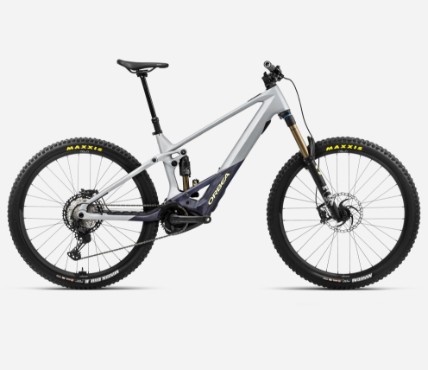

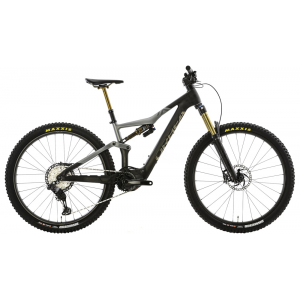
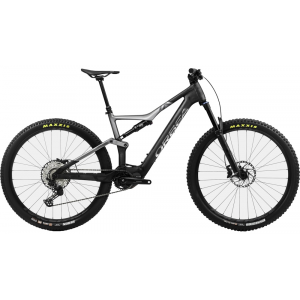
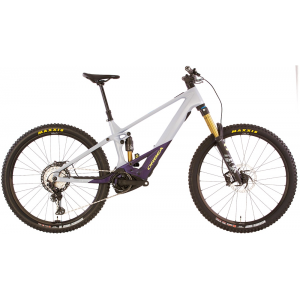
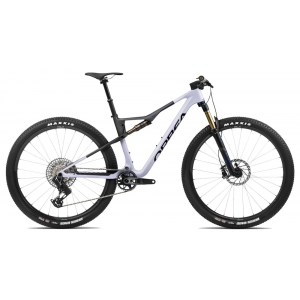



















28 comments
Post a reply to: Vital Long-Term Review - Orbea Rise E-Bike